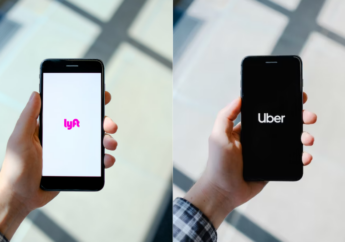Best Personalization Examples to Boost Sales Your E-commerce Store
by Arnab Dey Business Published on: 19 March 2022 Last Updated on: 19 September 2022

Starting an e-commerce business is one thing. Growing it’s another. If you’re looking for ways to boost your online sales, you must not rule out the tremendous impact of personalization. In an age where consumers put more value in their experience with brands, you will be missing out a lot if you’re not refining your customer experience strategy.
In fact, 71% of consumers feel frustrated when encountering an impersonal shopping experience. Whether it’s navigating your brand’s website or checking out products on your shop, customers prefer a personalized experience that makes online shopping easier and more convenient.
Understandably, you can’t perfect personalization efforts overnight. It requires constant commitment, time, and effort. Sometimes, you may also find yourself looking for inspiration for personalization. Other brands have been doing it for so long that you will learn a lot by understanding and replicating their success stories.
This article will explore some of the brands that made the most of personalization. You can leverage their tactics to boost your sales and grow your business.
What Is Personalization?
First, we need to agree on the true meaning of personalization. In a nutshell, personalization in e-commerce refers to creating a customer experience tailored to their needs and preferences.
Not all consumers think alike. Their tastes often vary. That’s why providing them with a generic experience when they encounter your brand won’t cut it in today’s ever-competitive marketing landscape. Your customer journey must be unique—something that will quickly grab their attention and direct them through the sales funnel.
You want their experience with your brand to be relevant. Meanwhile, they expect you to predict how they will behave in a specific phase of their buying journey. You can do this by serving them with personalized content just when they’re trying to decide whether to purchase your product or not.
They might be looking for a particular pair of shoes, and you recommended the color they love, making them buy on impulse.
Did they abandon their cart after adding a thing or two? No problem! You can serve them a targeted Google ad that will remind them of the products they’re missing out on. In short, you’re making it easy for your target customers to find what they’re looking for.
The Benefits of Personalization
1. Provide Exceptional Customer Experience
Personalization often leads to a positive customer experience, increasing the likelihood of conversion. By providing a good customer experience, you’re building a solid relationship with your customers and cultivating trust and loyalty in the long run.
2. Circumvent the Hurdle of Selective Attention
With too much information at the tip of their fingers, it can be a challenge to catch and hold your customers’ attention. But if you give your target audience the content they’re interested in, such as curated products or targeted ads, you can draw their attention and make them focus on your offerings.
3. Increase Your Profit Margin
This brings us to the most crucial advantage of personalization—sales. Happy customers will always come back to you. Providing them with a personalized experience will make them feel valued. They know they can trust you, leading to higher customer retention. Customers who trust your brand may even be willing to spend more on your products or services.
Personalization Examples to Help You Get Started
Many brands have excelled when it comes to personalization. Their strategies are worth looking into if you want to replicate their success. You can learn a lot from observing and understanding their personalization tactics and identifying some of the ways you can incorporate these into your business strategy.
Tailor Your Offers Based on User Behavior
Understanding user behavior is a good step toward personalization. For example, you can create offers for people based on how they interact with your website or online shop. You can start by looking at your website’s popular posts and pages and determine which of these have completed the most conversions.
There is also the browsing history of your shop visitors. They may have purchased specific products you can use to create an offer they can’t resist.
Aim to leverage user behavior in triggering the offers you will show them. For example, they added a dress to their cart. You may want to give them a discount when they buy an accessory just before they hit checkout. Keep in mind that your special deals depend on the items they placed in their cart, the product pages they have browsed, and so much more.
Amazon is one of the best brands that utilize user behavior for personalization. Have you ever visited the site and seen products that you’ve previously checked?
These recommendations remind you of what you have missed and appeal to your interest. In the end, you’re more likely to check out items that you might have been hesitant to buy at first.
Create Unique Campaigns Based on Location
Identifying locations is one of the best ways to improve sales. People looking for products in their area will find geolocation personalization helpful. You can do this by creating ad campaigns that consider where your visitor is located.
Some sites like Amazon let users know that certain products may not be available in their area. For a better browsing experience, one can key in their postal code to see if shipping is possible to where they live, saving them time and effort when online shopping. Depending on their location, you can also add a special offer like free shipping.
Knowing the location of your visitors is also essential if you’re offering seasonal products. If you’re selling worldwide, it’s good to know that summer in Australia is in December, while it’s winter in the US during that month. Segmenting your potential customers based on location will make a seamless shopping experience.
Consider Upselling, Cross-Selling, and Down-Selling
Another great way to increase sales through personalization is from upselling, cross-selling, and even down-selling. This is done when customers are about to check out the products in their shopping cart.
You can suggest a more expensive product than what they have in their cart, a typical way to upsell. If you want to cross-sell, you can give them similar product recommendations, regardless of pricing. You can also down-sell by recommending less expensive products than what they have purchased.
Remember to do one of these tactics during three occasions: right before they checkout, during checkout, or immediately after checkout. Customers are most excited about their purchase during this time, making it the perfect time to upsell, cross-sell, or down-sell. And with resources like AfterSell, finding out more about upselling is a breeze.
Some service-based e-commerce brands make use of upselling the most. Customers using the free version of a tool, like Canva, will find that they have limited options in their current plan. Canva prompts users to upgrade to the next subscription plan to use royalty-based images and designs.
Make Your Website Easy to Navigate
Your e-commerce website is one of the most critical aspects of your online business. It’s the very backbone of your operation. It’s where you get more traffic, which means higher chances of converting visitors into paying customers. If your website is hard to navigate, your bounce rate will suffer, affecting your SEO score.
Some sites prompt you with questions before you can proceed. For instance, brands offering online tools ask you first if you’re going to use a particular service for personal or business reasons. This allows them to segment their visitors and provide the optimal service tailored to your needs.
Personalize Your Content
For your ad and email campaigns, you must ensure a personalized experience. Consumers are skeptical of brands showing them irrelevant ads. That’s why you need to read their behaviors and opt for retargeting techniques. Reengage them with ads they will more likely be interested in.
The same can be said about your email marketing campaigns. You can segment your email list based on user behavior and how far along they are in the sales funnel. You can then use this knowledge in providing them with personalized content that will most likely resonate with them.
Suppose you gained new leads who signed up to your list. The next step is to cultivate their interest and warm them up to your offer. You may send them a series of content that slowly introduce them to your brand, your products, and eventually, your offers. If you directly give them a sales pitch, they are likely to opt-out of the list. However, you should use a different tactic when it comes to cold leads.
In Conclusion
While personalization may not be something new, it’s constantly evolving. Now, it’s one of the essential elements for many e-commerce brands. It offers more than personalized product recommendations.
Every step of the customer touchpoint requires personalization, from the moment they get served with your Google ad to the subsequent navigation of your website and after they have checked out your products.
Brands can use personalization in so many ways. You can create content unique to a specific audience demographic and offer discounts for customers who meet the criteria. The possibilities are limitless. If you want to increase customer conversions and grow your online business, personalization is a valuable tactic that you can’t do without.
Read Also:






































































































